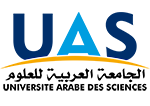[vc_row][vc_column][vc_column_text]The training of mechatronics students is partly common with that of mechanical engineering students, partly common with electrical engineering students, the rest being specific (robotics, modeling and control of mechatronic systems )
The mechatronics engineer has the same training as a mechanical engineer for machine design and manufacturing. On the other hand, it does not delve into the materials, fluid mechanics and thermal aspects. It shares the training of electrical engineers in automation, signal processing, and the first electronic modules. He benefits from specific training in mechanics applied to robotics, the integration of robotic systems, the control of articulated mechanical systems, as well as the modeling of mechatronic systems, the creation of test benches, the development and implementation of sensor and actuator systems applied to mechanical systems.
Projects allow students to implement their knowledge. Due to the wide spectrum covered by the development of a mechatronic product, it is not possible for a student or a small group to deal with a project in its entirety. The project therefore mobilizes, around the design and production of a mechatronic product, a promotion or a half-promotion for 4 semesters. This mode of organization makes it possible to concretely discover the project organization and management component, and also to allow students to approach different aspects of the project (mechanical, electronic, etc.) each semester. Each semester is schematically associated with one of the following stages of product development: pre-project study and search for solutions, detailed design, production of a prototype, industrialization and reliability.

Preparation for employment
The job preparation system is organized around 3 types of actions:
- Academic training modules.
- Company immersions (visits, internships).
- A device for developing the individualized professional project (PPI).
The aim of these actions is to make the student able to formalize a professional course during his course to on the one hand strengthen his motivation, and on the other hand be more mature to negotiate his first job. To achieve these objectives, 4 axes of work are treated in parallel.
1- Related to the knowledge of the company:
The objective is to get to know (and demystify) the company. It is treated by academic training modules, a progression of visits and internships (ST1, ST2, PFE), and the construction of personalized tools for job and internship search (CV, training and professional projects, letter, market simulator).
2- Develop direct contacts with industry and the network of engineers:
The objective is to make students perceive messages on the engineering profession from people whose credibility with students is very strong, therefore with maximum efficiency. In addition to the immersions in the industrial environment mentioned above, it is covered by conferences, forums, interaction with the "Arts and Industry" network, and meeting with an engineer chosen by the student in a professional activity situation for each second-year student in order to specify the study and professional projects and to discover the activity of the engineer.
3- Work on yourself to understand your motivations
The objective is to lead the student to "appropriate" his future job as an engineer. This involves the individualized identification of behavioral skills (from extraversion to motivation to belong) each year of the course for all students.
4- Formalize the professional project
It is implemented via the analysis of the possible orientations towards a set of engineering functions adapted to each student based on objective elements, then by the validation of the projects by simulation of a recruitment interview (internship and job) to each final year student in his specialty.
[/ Vc_column_text] [/ vc_column] [/ vc_row]
